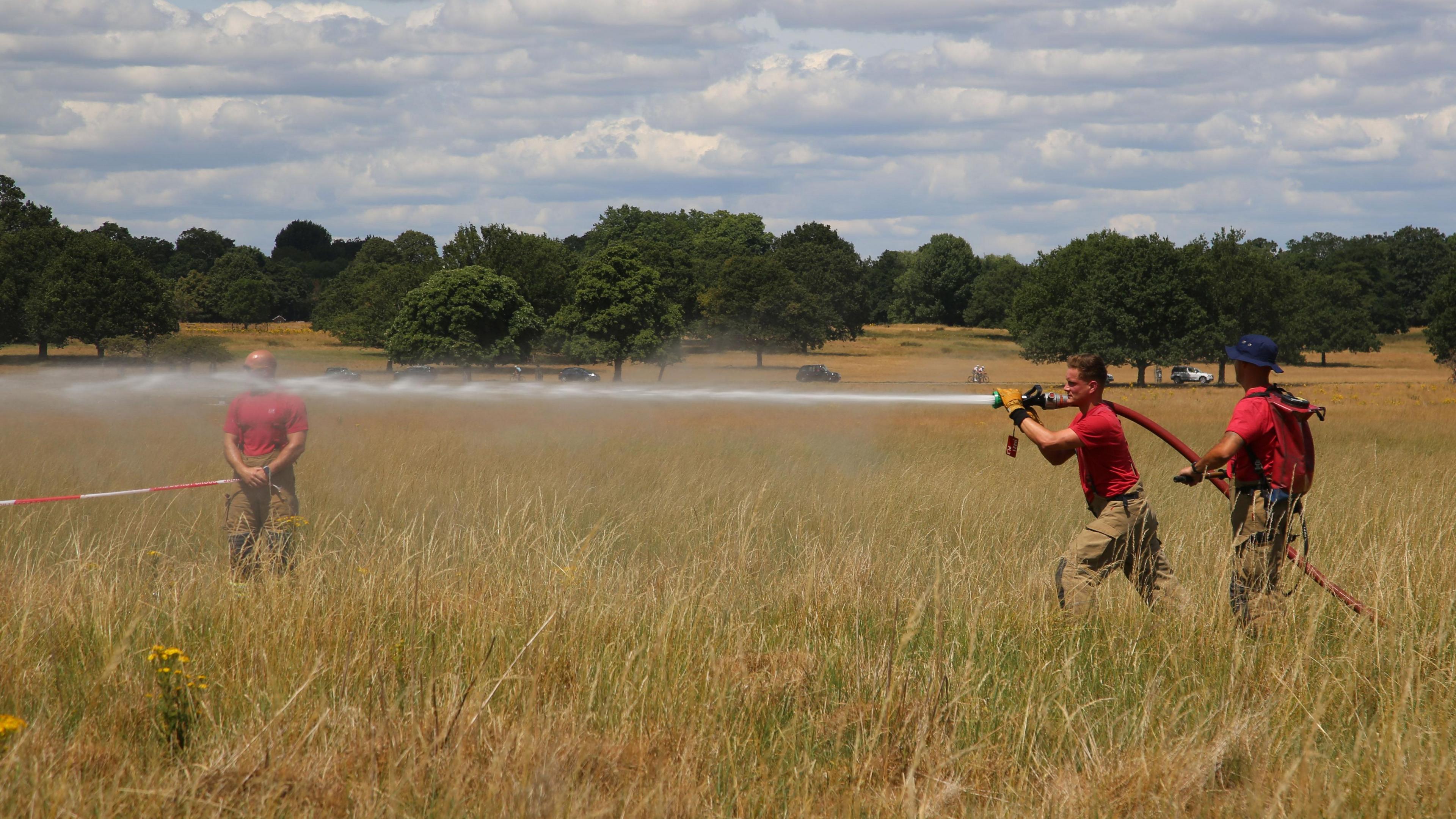London summers: Wildfires and scorched earth
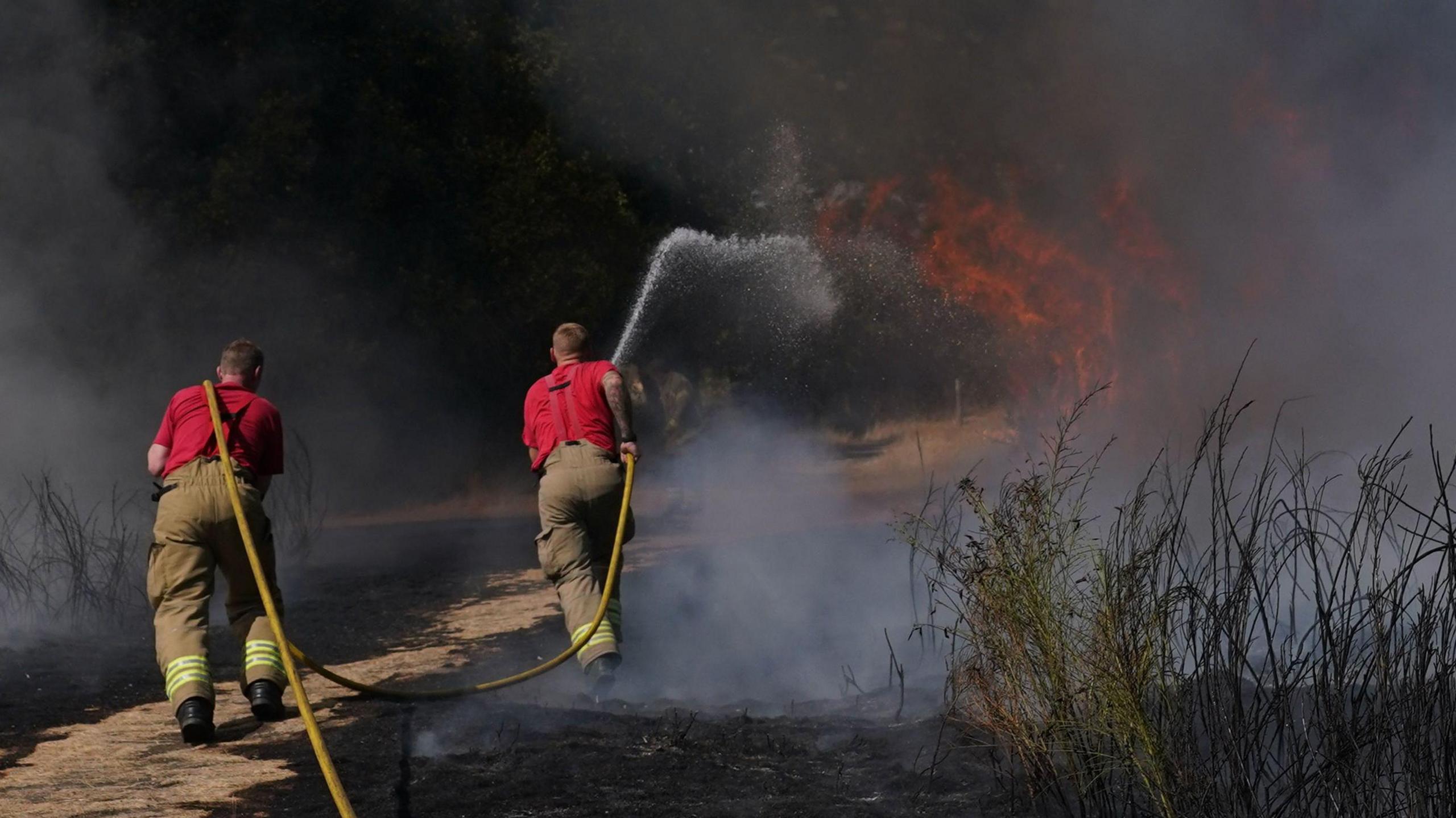
Firefighters tackled a grass fire in Leyton in early August
- Published
So far there have been four heatwaves this summer in London.
And while the weather may be cooling off, firefighters at Enfield station don't think they're quite out of the woods just yet.
London's parks and open spaces remain tinder dry, the ground is still rock hard containing very little moisture and the wildfire threat is still very real.
Already this summer there have been 64 wildfires in London, the most since 2022. In 2019, there were just 19.
All were started by people - mostly accidentally although many are started deliberately.
For the London Fire Brigade (LFB), wildfires and grass fires are the new normal and it has meant a step change in how they deal with them.

The fire in Wennington in 2022 led to a review of how the LFB coped
On 19 July 2022, LFB was given a wake up call.
In Wennington, Havering, right on the "rural-urban interface" between city and country in east London, a wildfire broke out.
The "rural-urban interface" - as the LFB calls it - is where the risk to property is most severe.
The day was said to be one of LFB's "busiest days in the modern firefighting era" with 2,496 calls received - including 740 relating to wildfires - and 26 fires requiring four or more pumping appliances to attend.
In Wennington, the fire was quick moving and 16 homes were destroyed. It led to a review of how the LFB coped.
Why London Fire Brigade is running wildfire drills
- Published10 July
Action needed before wildfire season, LFB urges
- Published6 June
London prepares for 'clear risk' of climate change fires
- Published11 July 2024
The major incident review said staff had responded to the "unprecedented demand with bravery, tenacity and determination".
"Without this concerted and coordinated effort there is no doubt the damage to London's communities would have been much worse," it added.
But it found that 39 appliances were "off the run" - unavailable - because of insufficient staff numbers.
It also found the LFB did not have a fully qualified wildfire tactical adviser and the brigade needed to do more to ensure its incident commanders could properly assess how to deal with wildfires and develop better tactical plans.
Since then, to deal with the increasing threat of wildfires in the capital, the brigade created 10 wildfire officers and 30 wildfire tactical advisers, who will be trained in the more rural areas of England where wildfires are more common.
New types of equipment were also introduced.
The changes have not been cheap. They were partly funded from City Hall as part of a £40m transformation fund.
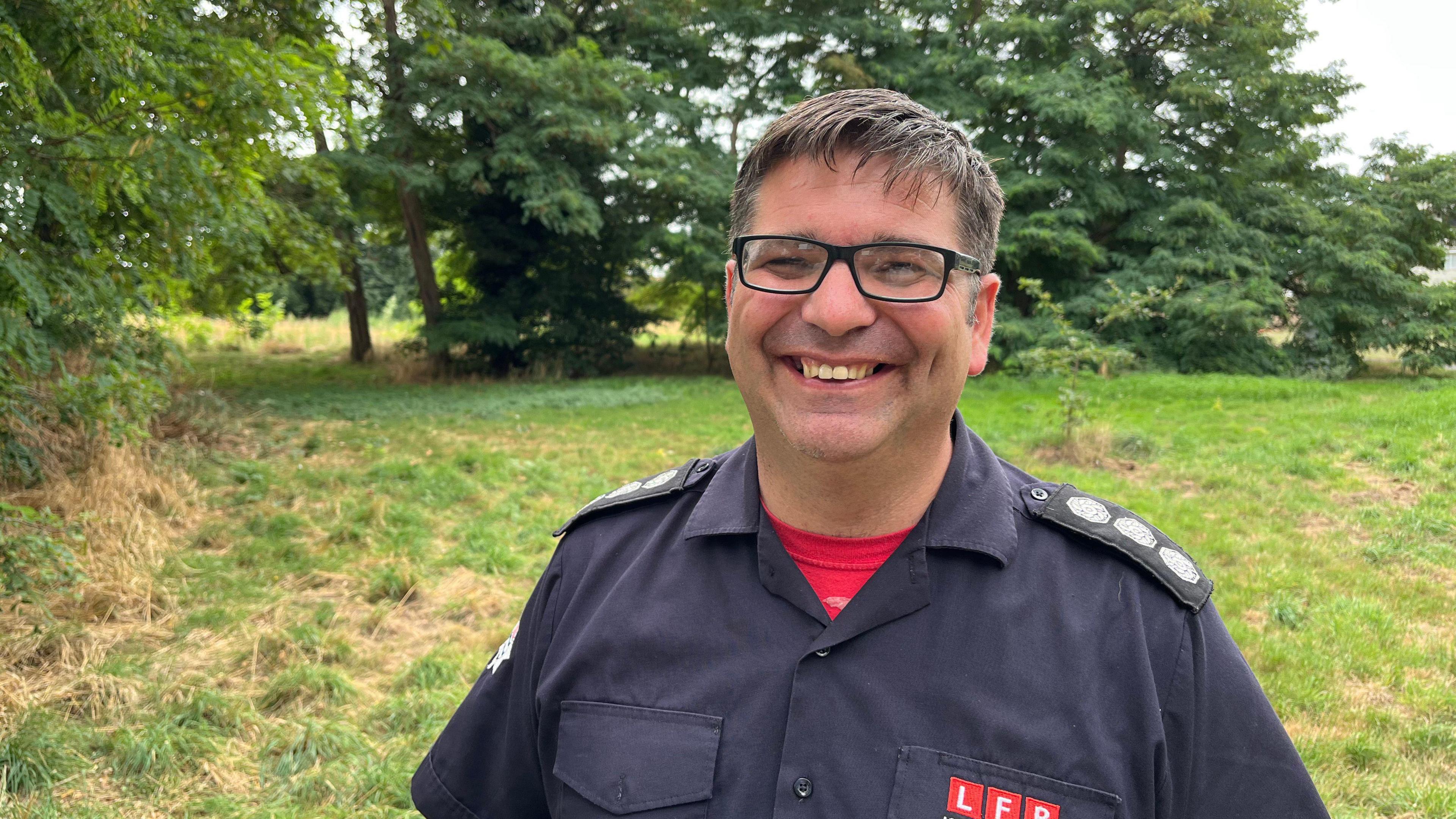
Ken Spratt, LFB's wildfire lead, said drier springs and summers are leading to more wildfires
Ken Spratt, LFB's wildfire lead, said: "Grass fires have always been a thing, but with climate change we are seeing longer, drier summers.
"This year we had a really dry spring as well which means we are seeing larger numbers of grass fires, and wildfires have larger intensity as well."
More emphasis is being put on the LFB giving advice to authorities to keep grass and vegetation cut back near homes and flats.
The tactic is now to send large numbers of fire engines to grass fires and try to deal with them quickly as unlike more rural services, the fires are usually close to homes.
If it needs more than four engines, then the specialist wildfire vehicles and equipment are called in. It is then classed as a wildfire.
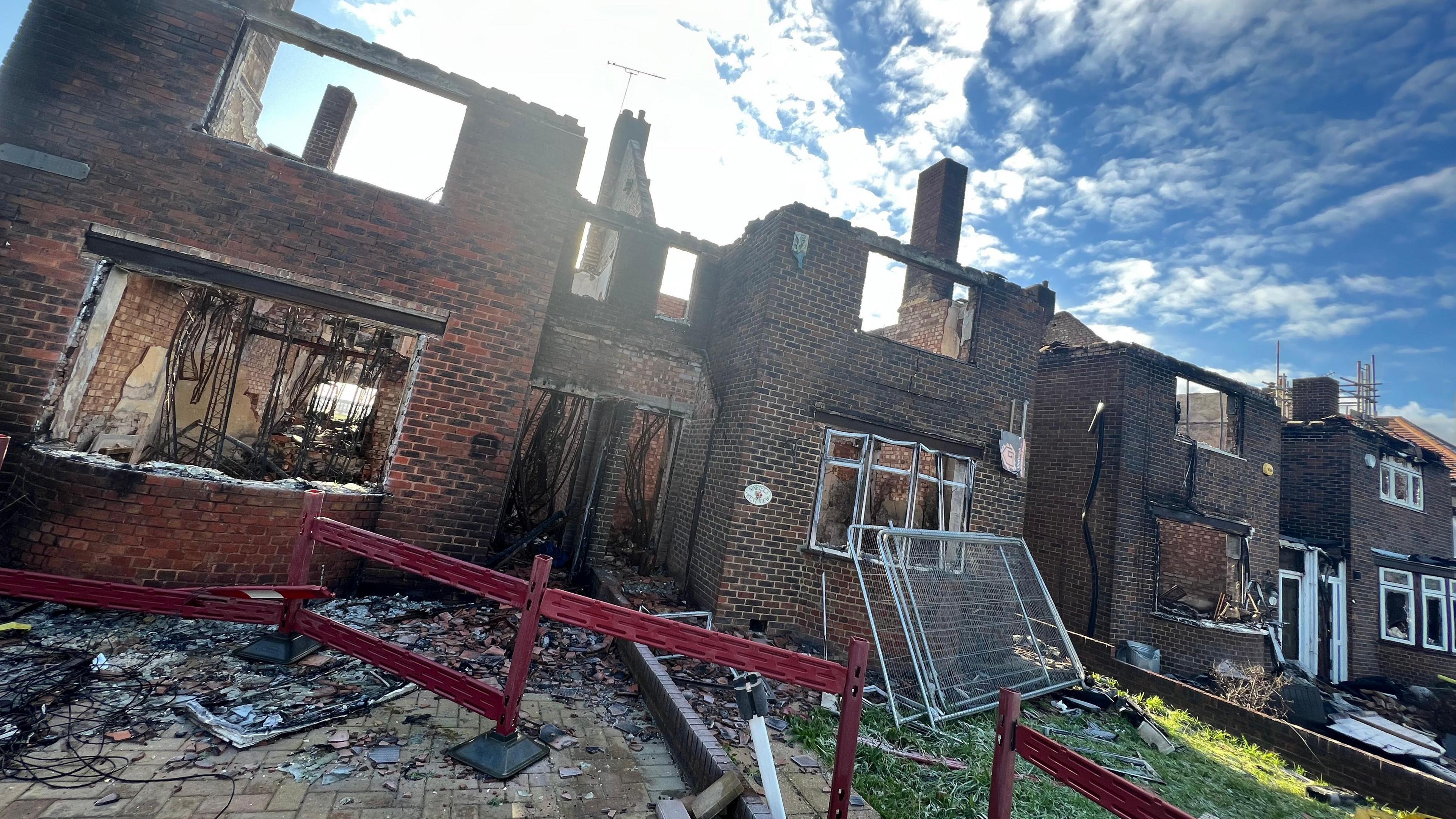
The fire in Wennington was quick moving and16 homes were destroyed
It is the wind that makes wildfires so difficult to tackle, according to firefighters.
Any wind can fan the fire and make them unpredictable. If you're not in the right place it can also surround you. In very hot conditions, heatstroke can be an issue.
The LFB is trialling new wildfire vehicles which are 4x4s that can go where the large fire engines can't. They are using drones and "holey hoses" that create a wall of water.
Phil Morton, LFB's deputy assistant commissioner, said the wildlife vehicles help them "make a quick and sustained attack on a fire".
The vehicles can also be on the move so crews can work along the fire's edge more quickly.
"They provide us with the opportunity to work in an agile way, quickly and efficiently off-road and get to hard-to-reach places that ultimately a fire engine may struggle to get to," Mr Morton added.
Part of the wildfire unit's kit is also a misting lance that delivers a fine, high-pressure spray deep into the soil, cooling smouldering peat and roots so hidden fires cannot flare up again hours or even days later.
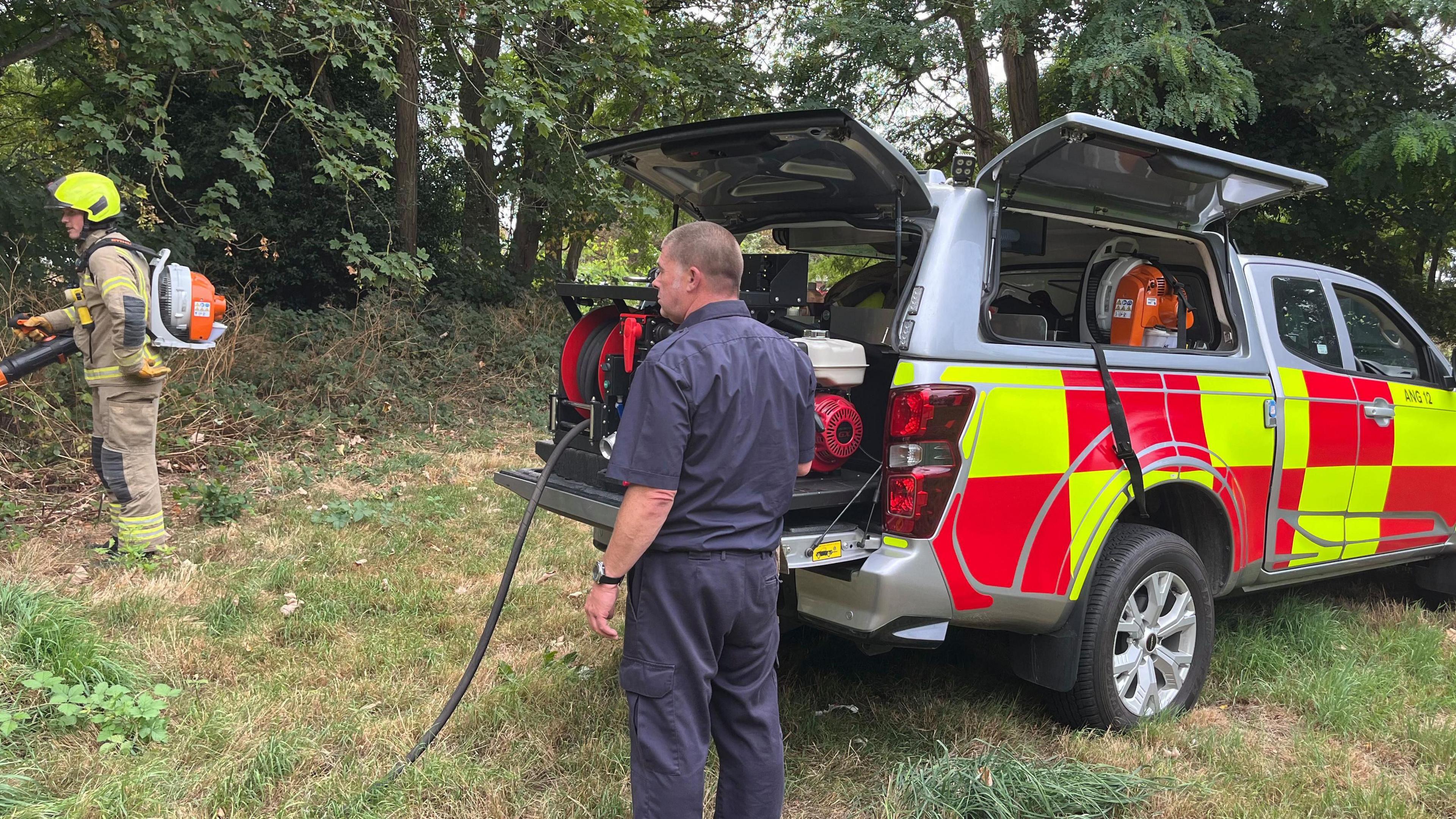
Four new wildfire vehicles are being trialled by the LFB
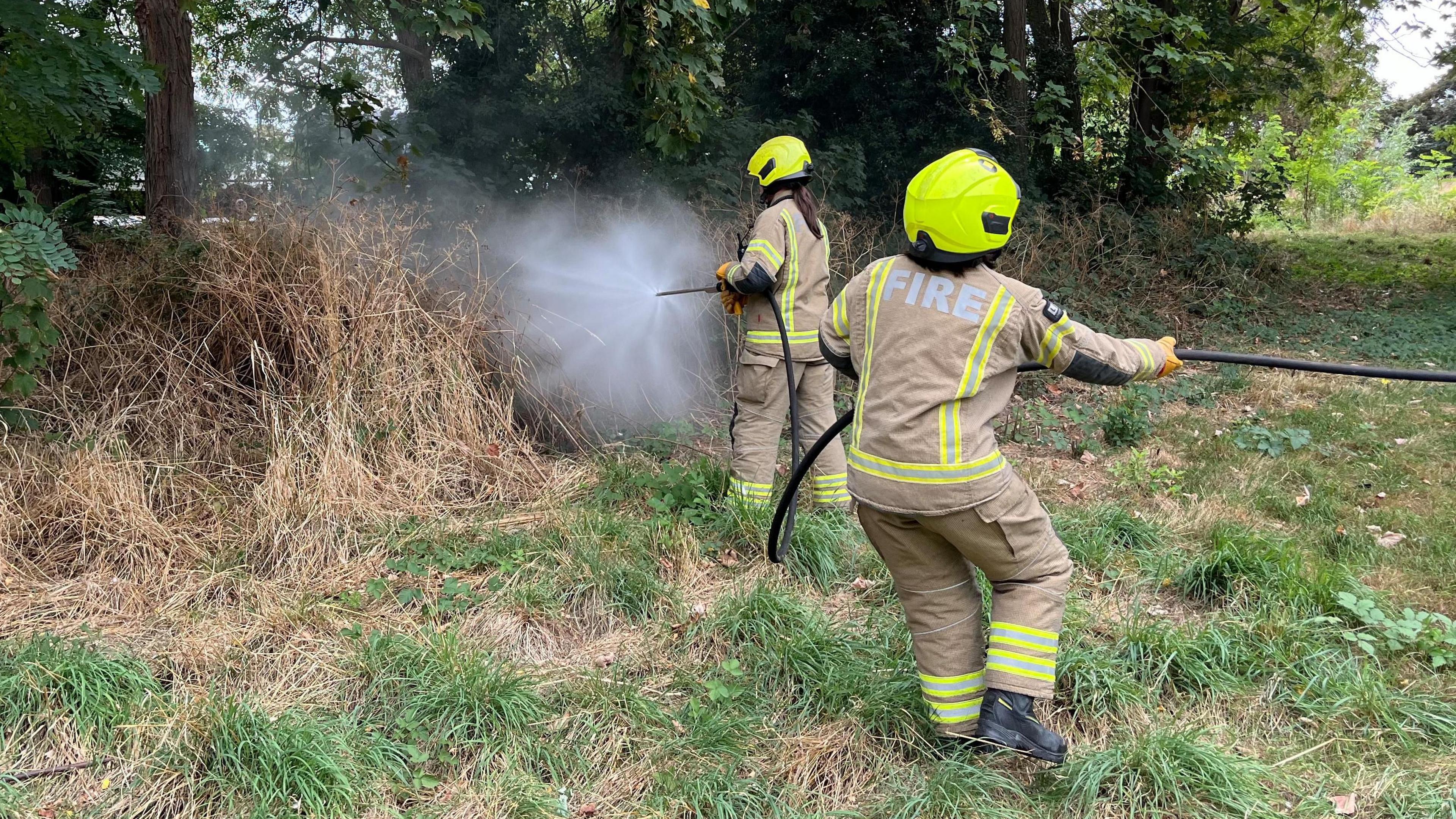
Part of the wildfire unit's kit is a misting lance that delivers a fine, high-pressure spray deep into the soil
One area that has seen a number of fires this summer is Wanstead flats in east London.
Tony Jackson, a station commander for the LFB, said: "If you look down here the ground is really hard and dry and what we're finding through the summers that we're having now is the ground is getting really really dry.
"Wanstead Flats historically is known for having quite a lot of peat on it as well which does burn quite quickly and is deep seated but what comes into consideration here as well is human factor, human behaviour, you can have discarded cigarettes, barbecues, also comes into it is potentially glass, broken bottles, reflection from the sun when you've got high-intensity sun you can get reflection which can cause fires."
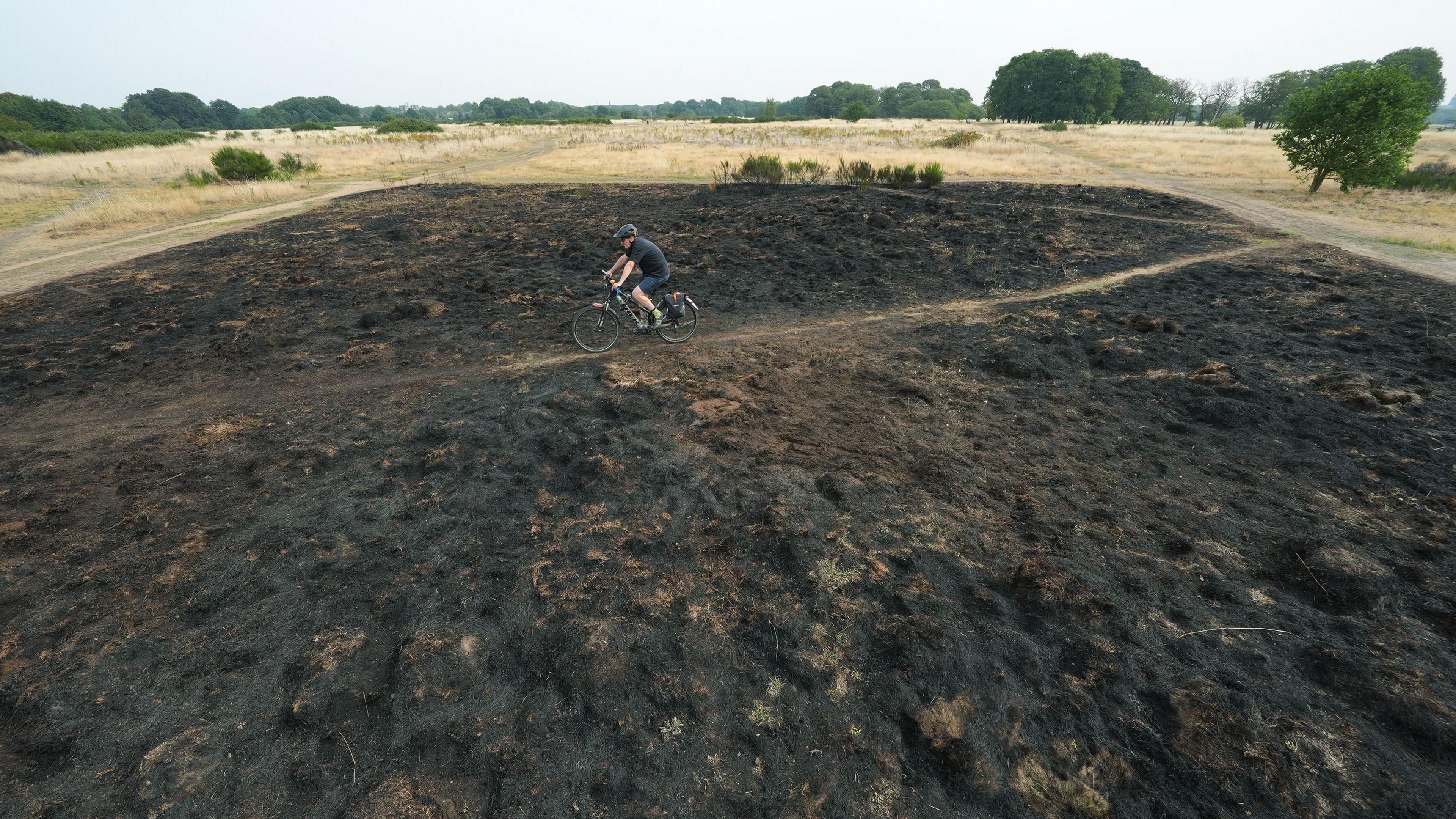
Parts of Wanstead flats are still black and charred
England entered its fourth heatwave of the summer on 12 August, with a top temperature of 33.4C (92F) recorded in Northolt in north-west London.
While a warming climate will mean more heatwaves and more wildfire, almost 80 fires in locations such as open grassland, scrubland, woodland and parks have been recorded as deliberate since the start of June.
And the habitats that are hit by fire suffer and the real damage could take months to assess.
Caroline Haines, from the City of London Corporation, said the short-term impact on the natural habitat was "fierce".
"There is no sound of birds. There's no other sound this morning. And that's because any wildlife that was here will have been pushed out," she said.
"And the heat goes downwards as well, of course. So anything nesting just below the ground will also be affected.
"The trees around, perhaps by the autumn, when we have the leaf drop and the growth of the trees reduces. Then perhaps it won't be until next spring when we really see the damage."
London is facing new challenges with a changing climate.
Listen to the best of BBC Radio London on Sounds and follow BBC London on Facebook, external, X, external and Instagram, external. Send your story ideas to hello.bbclondon@bbc.co.uk, external
Related topics
- Published15 July
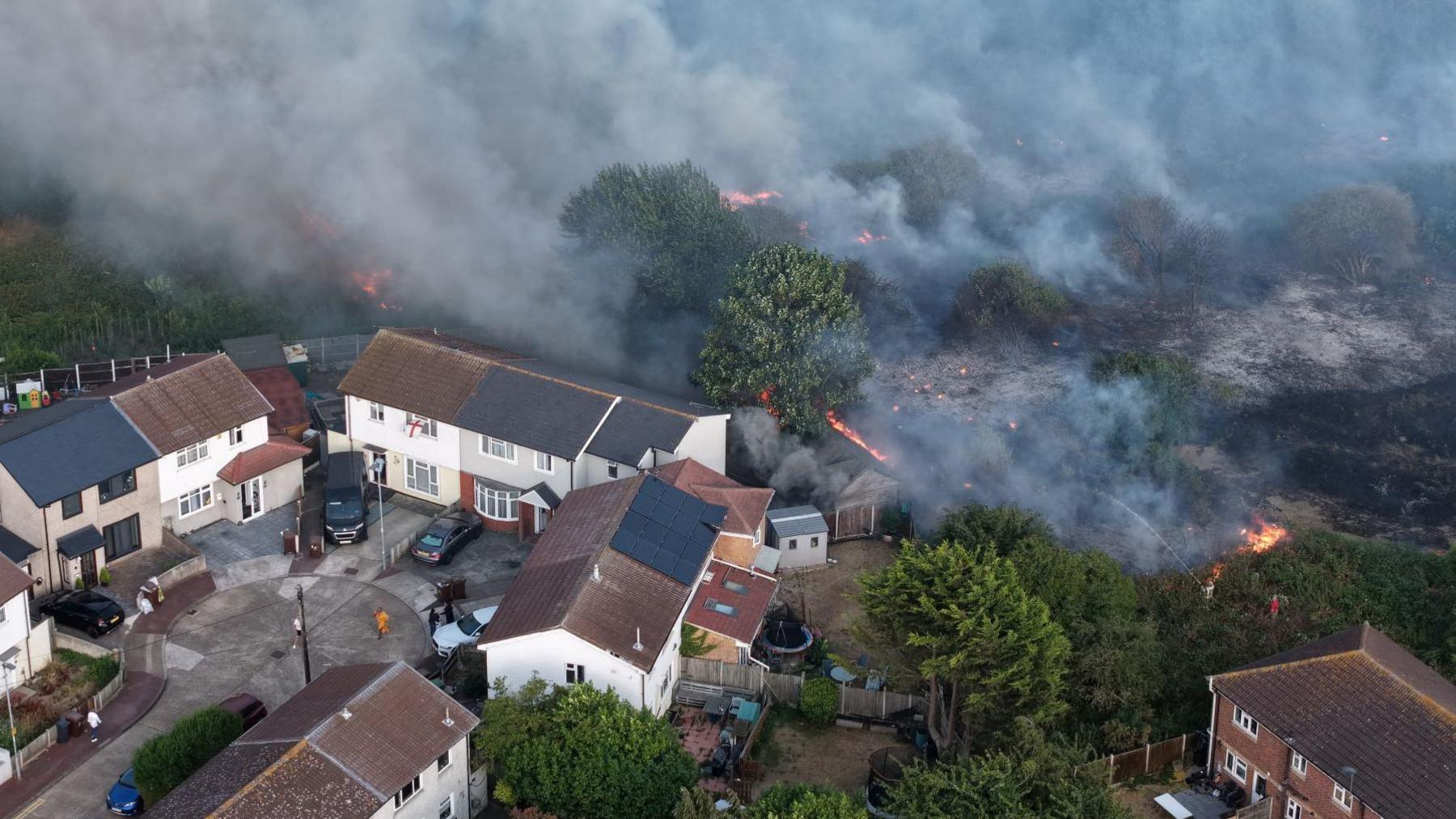
- Published14 July
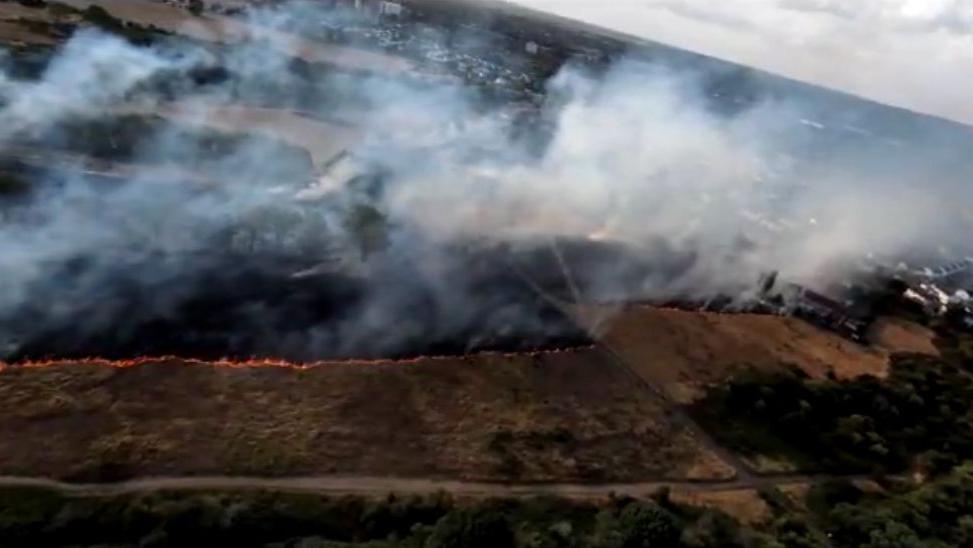
- Published10 July
